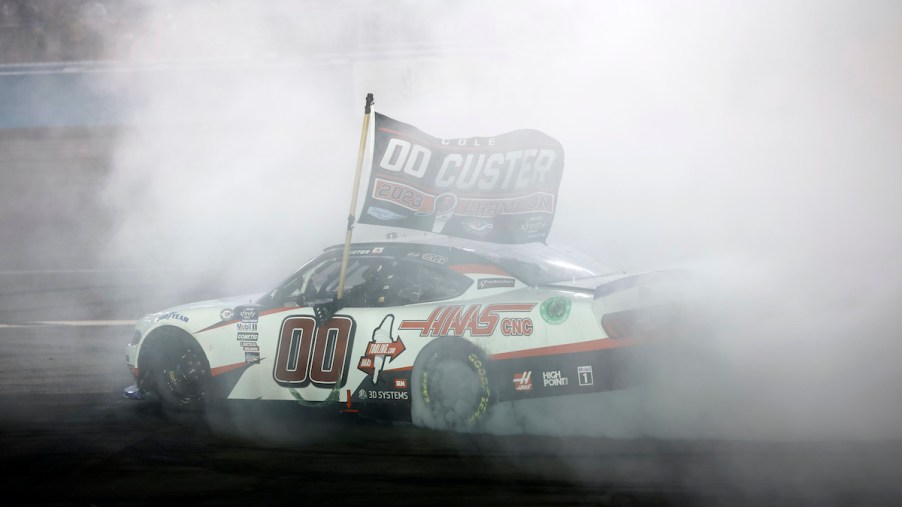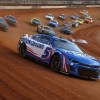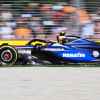
NASCAR Celebration Almost Turns Disastrous as Cameraperson Narrowly Avoids Getting Hit During Burnout
Cole Custer captured his first NASCAR Xfinity Series championship in Phoenix on Saturday night. It was a triumphant moment — and justifiably so after near-misses in 2018 and 2019. Part of that celebration was the traditional burnout at the start-finish line.
And that’s where the celebratory moment almost turned disastrous. An NBC cameraperson filming the smoke-billowing burnout got dangerously close to the spinning No. 00 Stewart-Haas Racing car and narrowly avoided getting hit. It was a close call and something NASCAR officials need to address with the networks before the 2024 season.
Cole Custer wins 2023 Xfinity Series championship
Cole Custer came close to winning the Xfinity Series title in back-to-back seasons in 2018 and 2019 but finished runner-up both times. He likely never thought he’d have another chance at a title in the series after getting promoted to the Cup Series in 2020.
After three lackluster seasons in the top tier of NASCAR, the 25-year-old returned to Xfinity this year, and it paid off. He ran near the front in races for much of the season, including victories at Portland, which clinched him a berth in the postseason, and Chicago, where he won a rain-shortened race.
In the playoffs, the SHR driver remained consistent, and when it mattered most, he recorded his third win of the year at Phoenix and captured his first championship.
Cameraperson narrowly avoids disaster
Moments after taking the checkered flag, Custer received a congratulatory message from series director Wayne Auton, who also instructed the driver to make his cool-down lap around the track and come back to the start-finish line and grab his championship-winning flag.
The No. 00 made its way around the mile-long track and, several minutes later, pulled down near the pit wall to collect the awaiting flag from his understandably excited pit crew, who each congratulated him with high fives and handshakes through the window. After securing the flag inside the car, Custer spun the screeching tires and began his burnout.
The SHR car moved away from the wall and began its first rotation. The cameraperson followed. Smoke began to billow from under the vehicle and form a cloud on the second spin. The view from the camera, which was within feet of the car, went white with the cloud enveloping it.
Once the cloud momentarily cleared, the camera was positioned right off the front bumper as the car was in the middle of another rotation. It was apparent to those watching at home that, in that position, the cameraperson would get hit when the rear of the car rotated around.
As the back end of the car swung around, the cameraperson made an evasive move to avoid getting hit. The broadcast then cut away from the close-call camera and went to an overhead view, which showed the car spinning away from the wall with the cameraperson still in hot pursuit.
NASCAR needs to address before injury happens
While NASCAR fans love a good burnout, is a cameraperson putting their safety in jeopardy to get a close-up shot really worth it? There’s an argument to be made that a view of the burnout from a camera positioned 20 feet away, where the crew members were standing, isn’t any worse or better than one with a cameraperson who is right next to the car. And the former doesn’t risk anyone’s safety.
The networks want to provide an entertaining product. NASCAR wants the same. But the two need to discuss the protocol for filming burnouts in the future.
The drivers and pit crew members already put their safety on the line every race. However, that’s all off-camera. When there’s an incident, the networks are judicious in showing a replay.
If a cameraperson were hit, rather than the near-miss with Cole Custer in Phoenix, fans would witness it all live. That, everyone will agree, would not be a good thing. And it all would have been totally avoidable.
To stay up to date on the latest happenings in NASCAR, including breaking stories you can’t find anywhere else, follow Kyle on YouTube and Twitter.



